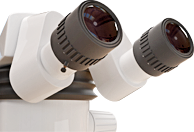FTIR Principles and Sample Preparation
Principles of FTIR Spectrophotometry
 FTIR relies on the fact that the most molecules absorb light in the infra-red region of the electromagnetic spectrum. This absorption corresponds specifically to the bonds present in the molecule. The FTIR frequency range are measured as wave numbers typically over the range 4000cm-1 to 600cm-1.
FTIR relies on the fact that the most molecules absorb light in the infra-red region of the electromagnetic spectrum. This absorption corresponds specifically to the bonds present in the molecule. The FTIR frequency range are measured as wave numbers typically over the range 4000cm-1 to 600cm-1.
The background emission spectrum of the IR source is first recorded, followed by the emission spectrum of the IR source with the sample in place. The ratio of the sample spectrum to the background spectrum is directly related to the sample's absorption spectrum. The resultant absorption spectrum from the bond natural vibration frequencies indicates the presence of various chemical bonds and functional groups present in the sample. FTIR is particularly useful for identification of organic molecular groups and compounds due to the range of functional groups, side chains and cross-links involved, all of which will have characteristic vibrational frequencies in the infra-red range.
LPD Lab Services have the capability to perform ATR-FTIR chemical and functional group analysis on small samples with an FTIR microscope.
 Sample Preparation and Analysis Techniques for FTIR
Sample Preparation and Analysis Techniques for FTIR
- Horizontal ATR attenuated total reflectance allows measurement of aqueous solutions, elastic and viscous samples which are difficult to grind and analysis of small samples and localised organic contamination.
- Specular reflectance allows measurement of thin films on metals
- KBr discs allow suspension of powders, contaminants or liquid in IR transparent KBr so they may be analysed even at trace levels.
- Gas cells for headspace analysis.
- Solvent extractions of low level bulk organic compounds and surface contaminants.
- Liquid cells are used for measuring liquid samples in transmission mode.

